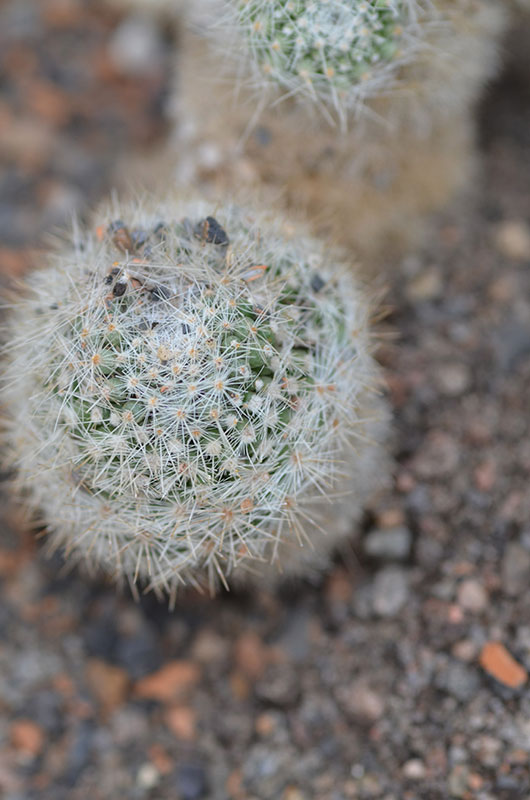| General Description | The spines covering Mammillaria candida is so dense the cactus appears to look like a big snowball. |
| ID Characteristic | The stem is spherical or oblate, flat or depressed at the top, 6- 8 cmm thick, 4-8 cm high. Solitary until fully developed and clustering when mature usually in the 5 or 6 season. The tubercles are close and rather slender, 1 cm long and generally up to 4 mm thick. The axils are very wooly with a tuft of white bristles. A white wool is present on the aeroles as well as many, short, uneven spines radiating irregularly. |
| Notable Specimens | Royal Botanical Gardens, Burlington, Ontario, Canada. |
| Flower Description | Small, creamy white to a pale pink in colour, about 1 cm long, petals acute with a broad, pink, dorsal strip. Stamens, are pink with the styles being a deeper pink. The stigma has six pinkish-purple lobes. |
| Fruit Description | The fruit is slender and red and contains, black, glossy seeds. |

